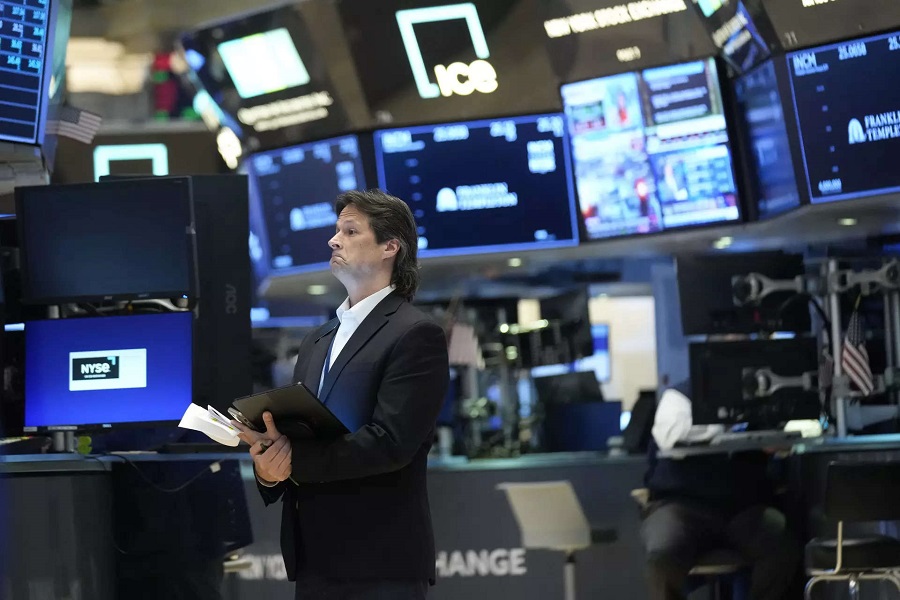What does a notable rise in bond yields mean?
Last week saw some very notable—and perhaps scary—increases in bond yields across G10 countries.

There’s no doubt that the week as a whole was a very nasty one with some notable yield levels taken out, such as 5% for US 2-year notes and 4% for 10-year notes.
>> Wary of the risk of policy mistakes
The question now is whether new multi-year highs for yields across a number of countries increases the risk that policy tightening and persistent inflation will "break" economies and break some segments of the financial markets.
While there might have been a bit of a reprieve last Friday for bonds as US payroll data fell slightly short of expectations, there’s no doubt that the week as a whole was a very nasty one with some notable yield levels taken out, such as 5% for US 2-year notes and 4% for 10-year notes.
The fact that yield curves re-steeped, particularly in Europe, last week tends to suggest that the pressure at the long end is not just about the near-term outlook for more policy rate hikes but also about inflation persistence and a higher-for-longer approach from the central banks.
The question this throws up is whether the old adage that "if it’s not hurting, it isn’t working" is applicable as both central banks and the market come to realize that things may have to ‘break’ to get the degree of disinflationary traction required.
Of course, central banks don’t go out to "break" things with tighter policy, but in the current context of stubborn inflation, recession resistance, and labor market tightness, there may be no other option for the central banks—and the bond market—but to inflict the sort of pain that does break things.
So, what might break? Higher yields, should they persist, could reignite pressure on regional US banks after they suffered a notable decline in deposits earlier in the year. Things have steadied more recently, helped by Fed support, but it is notable that regional banks have not seen their share prices rebound despite a notable improvement in the broad stock market and this Fed support.
Another, possibly deeper, break seems possible here. In the FX market, Mr. Steve Barrow, Head of Standard Bank G10 Strategy, thinks the place to look for strains is in the dollar and yen. Last September, the BoJ was forced to intervene to try to stop the dollar and yen from rising above 150, a move that seemed to be caused by the surge in 10-year US yields from 2.6% to over 4% between August and October, with no reply from 10-year JGB yields, which were stuck at the BoJ ceiling of 0.25%.
>> The outlook for monetary policy among central banks
Fast forward to today, and the new upper limit of 0.5% is close by in Japan, but if treasury yields continue to rise, it seems likely that the dollar/yen will test and even "break" 150. US regional banks and the dollar/yen are examples of markets that, in some sense, have already been broken once and could break again. But in addition to this, there is clearly the possibility that new markets could break that have perhaps been relatively immune to rising government bond yields so far. These could include the corporate credit space and emerging market yields, where the trends have been reasonably benign just recently.
Allied to this, equities have been pretty solid, and here too, a good part of the rise we’ve seen in the first half of the year could be unwound by the better yields on offer in the bond market and by the economic destruction caused by this rise in rates. "We might not be talking about ‘breaks’ in corporate credit, EM debt, and equities in terms of abject capitulation, but even just a more difficult trading environment could easily spin out of this sharp rise in yields", said Mr. Steve Barrow.
But after highlighting some areas where tensions and even ‘breaks’ - could arise, we then have to ask whether this is likely. "We lean more to the ‘no’ camp, not least because inflation is coming down in global terms and should continue to do so. If inflation were moving higher and likely to rise further, then we would be far more concerned about the possibility of breaks in the markets. But as long as inflation is falling and policy rates—and bond yields—are just grasping to find the end of the rate-hike cycle, then a doomsday end for many financial markets can be avoided", emphasized Mr. Steve Barrow.








